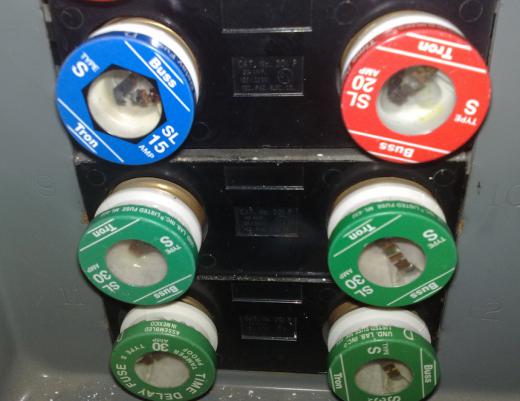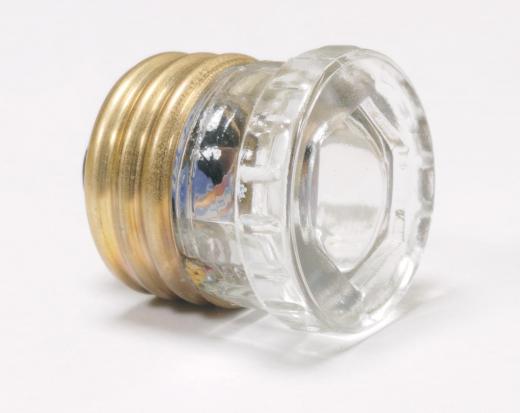Breaking capacity, sometimes referred to as interrupting capacity, is the maximum number of amps or volts that a circuit breaker can interrupt. Each apparatus designed to interrupt electrical current can have more than one breaking capacity because the voltage it is exposed to affects the number of amps it can interrupt. It is important to use a breaker that has a high enough breaking capacity to interrupt the maximum possible current and voltage in a system because an unchecked surge in electrical energy can do damage to electronics or to a building.
When a fuse, which is a simple device used to protect an electrical circuit, reaches its breaking capacity it burns out. Under normal circumstances, electrical current flows freely through a fuse, but if the current or voltage becomes too high, it causes the fuse to heat up until the wire inside it disintegrates. Once a fuse has reached its breaking capacity, it will no longer function and needs to be replaced.

A circuit breaker works on the same principle as a fuse but is designed to trip a switch that disrupts the electrical current once the breaking capacity of the device is reached. Restoring the circuit after this happens is simply a matter of flipping the switch back the other way. While most circuit breakers are designed to protect electronics from damage, some are designed to protect people from electrocution as well.

The breaking capacity of a circuit breaker is lower than the value of its making capacity, which is the maximum voltage or current that the machine can conduct. As voltage and current increase, it becomes more difficult for a breaker to disrupt the flow of electricity, so the capacity is reached prior to the making capacity. At high levels, electrical current is capable of arcing, which allows the energy to bridge the gap between two conductors that are not in physical contact with one another. The current could, potentially, continue to flow through a broken circuit, even though the physical line has been disrupted.

A fuse or circuit breaker is given a breaking capacity rating which states the maximum level that the apparatus is able to disrupt. Each apparatus is given a rating based on the maximum current and the maximum voltage that it can disrupt. For safety reasons, a circuit breaker should be rated high enough to deal with the maximum voltage and current possible in a given system. A surge in electricity can destroy electronics or cause fires to start within a building's electrical system.
